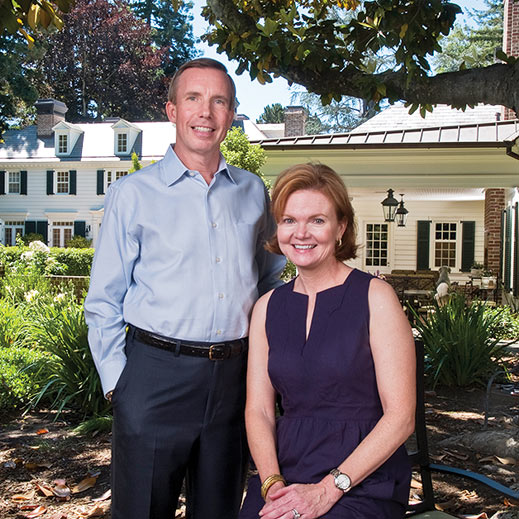Learning fast and experimenting are key features of a venture capitalist’s professional life, says John Jarve, who is bringing those characteristics to his new role as president of the MIT Alumni Association starting July 1. As managing director of Menlo Ventures, he has a lot of experience identifying good ideas and helping move them forward.

Jarve chose venture capital early in his career after earning MIT degrees in electrical engineering and computer science and an MBA from Stanford University. He worked as an engineer for several years and found that he loved the first stage of projects—intense learning about new areas—much more than design.
“When looking for great companies to finance and good markets to pursue, a lot of time is spent in the learning process,” says Jarve. “Once you make your investment, you have another important job as a VC. That is mentoring, partnering, and supporting the team to be successful.”
Jarve has been deeply involved in alumni activities for years. When he joined Menlo Ventures in 1985, partner Dubose Montgomery ’71, SM ’72, a past president of the MIT Club of Northern California, pulled him into club activities. Soon he was running events and helping with fund-raising; eventually he became president. He has also served on the Alumni Association board and on the MIT Corporation, with stints on six visiting committees. He says he particularly enjoyed his work with the social sciences visiting committee, which included visits with prize-winning faculty. He’s also served on the Corporation Development Committee and the School of Engineering Dean’s Advisory Board. For these contributions, he earned the Bronze Beaver Award and the Harold E. Lobdell ’17 Distinguished Service Award.
Supporting need-blind admissions is close to Jarve’s heart because he benefited from MIT’s financial-aid policy after both his parents died when he was in his teens. And he says personal and academic guidance from his freshman and engineering advisors helped him thrive in those difficult circumstances. “I am convinced that the good things that have happened in my life would not have been possible without MIT, need-blind admissions, and the excellent counsel I received from my advisors,” he says.
As president, what does he want to do during his one-year term?
“This is a very exciting time for the Alumni Association and for MIT,” he says. “MIT is gearing up for a comprehensive campaign, and the Alumni Association will be supporting the campaign to help make MIT a greater institution. On the education side, we started with OpenCourseWare, and the next phase is MITx/edX. It is so exciting that an MIT education can be shared around the world.”
Jarve hopes to “bring MIT to alumni, since many people cannot come back to campus and get exposed to the amazing programs at MIT,” he says. “I really do feel that technology can help connect alumni back to the Institute.” He supports getting more faculty to speak at regional events as well as employing technology to create interactive experiences. He wants to brainstorm ideas such as a Kickstarter-type fund-raiser for student projects. He also wants to raise the visibility of social entrepreneurship ventures led by students and alumni.
“From a venture standpoint, we can plant the seeds and some projects will be successful and some not,” he says, “but the important thing is that we get them started.”
Jarve and his wife, Jacque, live in Atherton, California, and have two children: a son, Will, who joined a startup while earning a degree at Stanford, and a daughter, Katie, a Stanford undergrad. In his free time Jarve enjoys cycling, golf, and skiing.
Keep Reading
Most Popular
Large language models can do jaw-dropping things. But nobody knows exactly why.
And that's a problem. Figuring it out is one of the biggest scientific puzzles of our time and a crucial step towards controlling more powerful future models.
How scientists traced a mysterious covid case back to six toilets
When wastewater surveillance turns into a hunt for a single infected individual, the ethics get tricky.
The problem with plug-in hybrids? Their drivers.
Plug-in hybrids are often sold as a transition to EVs, but new data from Europe shows we’re still underestimating the emissions they produce.
Google DeepMind’s new generative model makes Super Mario–like games from scratch
Genie learns how to control games by watching hours and hours of video. It could help train next-gen robots too.
Stay connected
Get the latest updates from
MIT Technology Review
Discover special offers, top stories, upcoming events, and more.